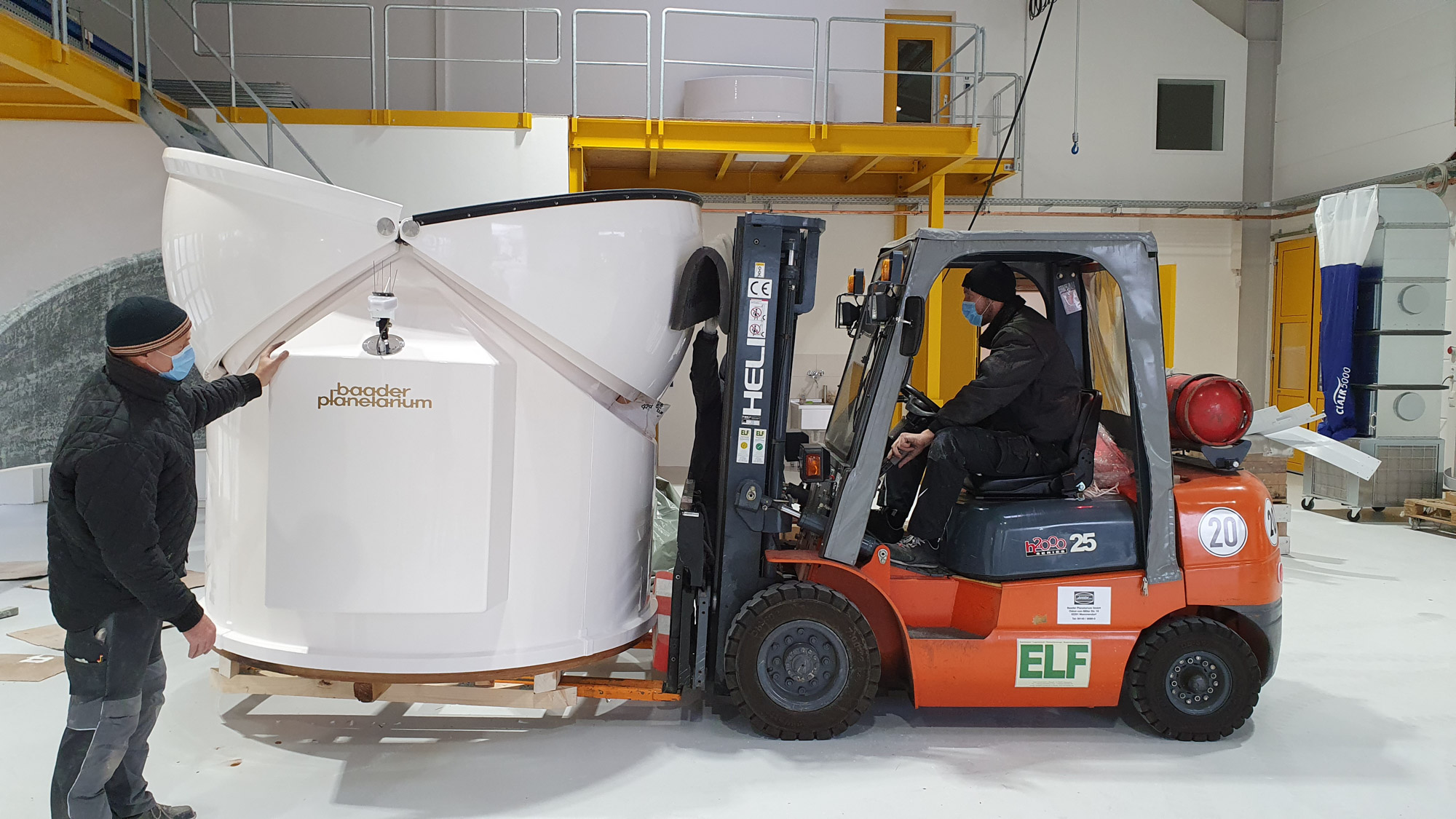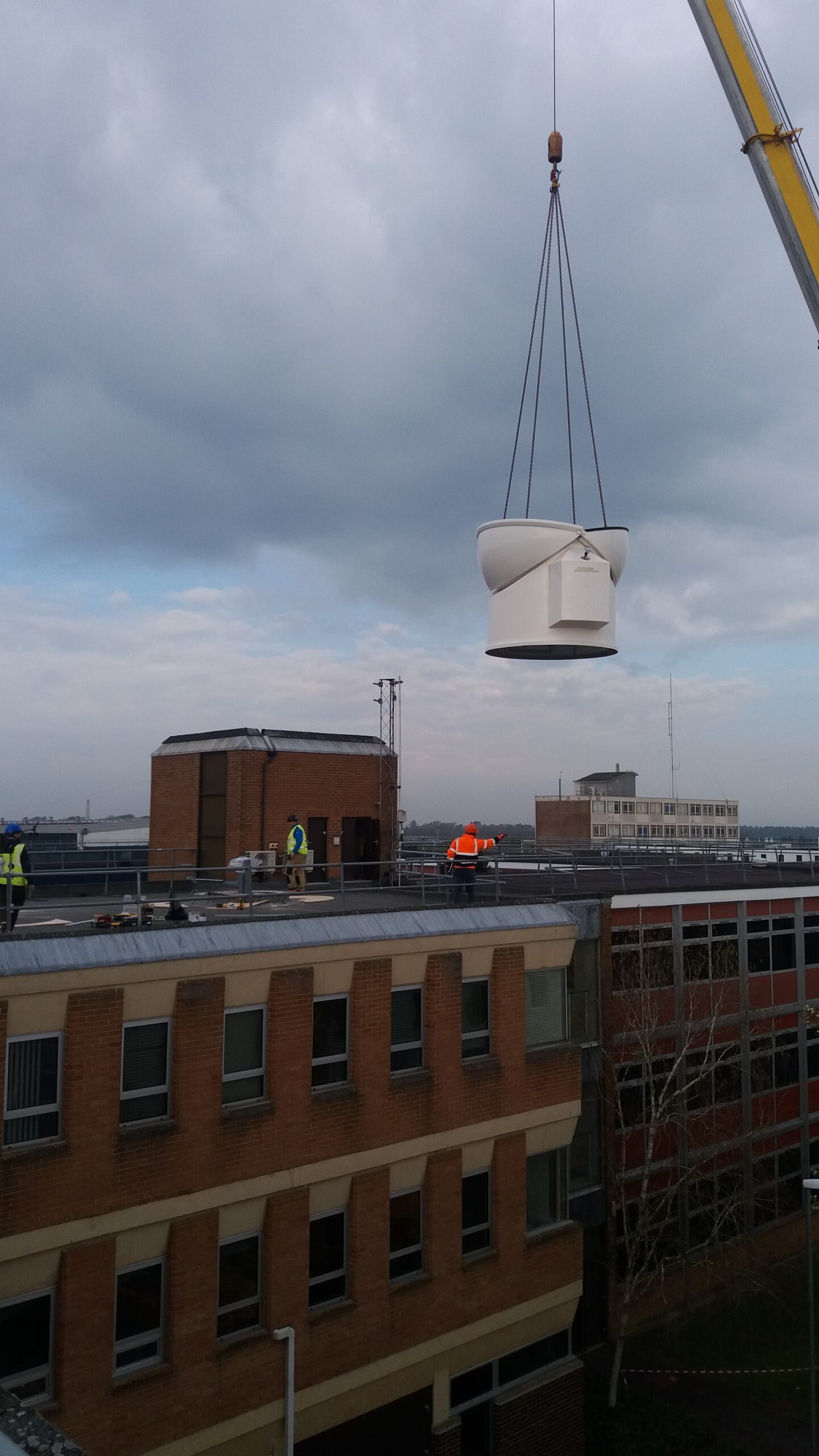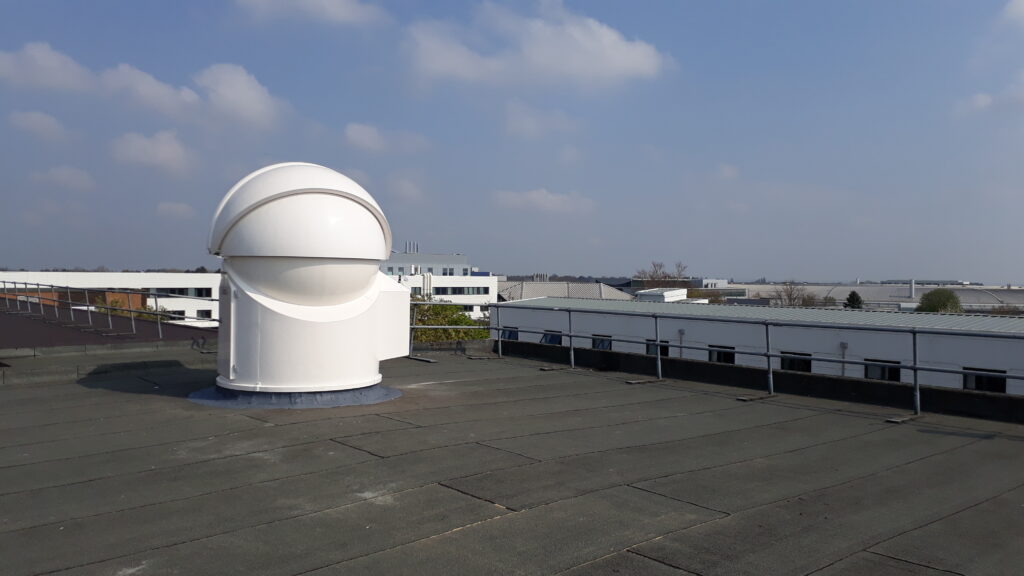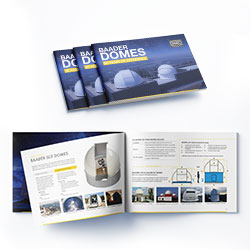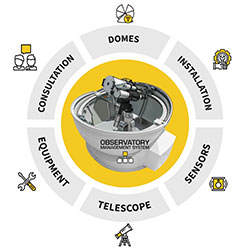
The Total Carbon Column Observation Network (TCCON) is an international network of institutions using ground-based instruments to provide reference data for validation of atmospheric composition measurements from other instrument platforms such as satellites. Such information is a vital tool in monitoring the Earth’s atmosphere and understanding its role in climate change.
The instrument set up by the Spectroscopy Group of the Rutherford Appleton Laboratory’s RAL Space department, located near Harwell in Oxfordshire, recently became an accredited member of the TCCON network.
The instrument records data whenever the sun is visible using a solar tracker, or heliostat, on the roof of the building. The tracker directs sunlight down into the laboratory where it is analysed by a spectrometer to provide information about the part of the atmosphere through which the sunlight has travelled. The tracker is protected from the weather by a Baader 2.3-metre AllSky dome, which operates automatically according to the weather conditions to maximise the amount of data collected.
The dome has been operating fully since March 2022 and has protected the instrument from low temperatures, high winds and heavy rain.The dome was ordered in the Covid-19 pandemic and the Brexit transition period, both of which posed challenges for production and delivery schedule of the dome. Baader Planetarium made strenuous efforts to provide a reconditioned dome, delivered before the end of the Brexit transition period with its associated uncertainties, and provided essential detailed advice on aspects of the dome installation.
We are extremely satisfied not only with the build quality, performance and reliability of the dome but also the ongoing care and level of support provided by staff at Baader Planetarium.
Richard Brownsword
Hinweis von Baader Planetarium:
Baader 2.3m AllSky-Dome
Weltweit einzige schlüsselfertige Klappschalenkuppel für "Space Surveillance"-Zwecke, die innerhalb einer Stunde nach Ankunft voll einsatzbereit ist
Der Versand einer Kuppel ist sehr aufwendig und die Endmontage dauert in der Regel mehrere Tage/Wochen. Diese Kuppel wird so hergestellt, dass sie in einen Lastwagen passt – wobei die gesamte Mechanik, die Elektronik, die autonome Wetterstation, die PC-Verbindung und die unterbrechungsfreie Stromversorgung vollständig montiert sind. Es müssen lediglich zwölf Ankerbolzen in eine vorbereitete Betonplatte von 200 cm Durchmesser gebohrt werden. Schließen Sie Ihren PC an und die Kuppel ist 24/7 einsatzbereit – ein Leben lang.
Wir empfehlen unseren Kunden, uns für den Endabnahmetest (FAT) vor der Auslieferung der Kuppel zu besuchen, sodass alle Funktionen der Kuppel überprüft werden können und die gesamte Software besprochen und betriebsbereit ist, ohne dass qualifiziertes technisches Personal vor Ort erforderlich ist.
